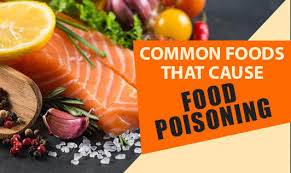The Dark Side of Food: Understanding Food Poisoning
Food poisoning is a serious public health concern that affects millions of people worldwide each year. It occurs when food or beverages contaminated with harmful bacteria, viruses, parasites, or chemical substances are consumed. While most instances of food poisoning are mild, they can sometimes lead to severe illness or even death.
Common Causes of Food Poisoning
Food poisoning can stem from a variety of sources, often linked to improper food handling, preparation, or storage. Some of the most notorious culprits include:
1. **Bacteria**: Pathogenic bacteria such as Salmonella, Escherichia coli (E. coli), and Listeria are common causes of foodborne illness. These bacteria can thrive in improperly cooked meats, unpasteurized dairy products, and contaminated fruits and vegetables. For instance, an outbreak of E. coli linked to romaine lettuce in 2018 highlighted how quickly contaminated produce can spread illness across a population.
2. **Viruses**: Norovirus is one of the leading viral causes of food poisoning, often transmitted through contaminated food or surfaces. It can cause severe gastroenteritis, leading to vomiting and diarrhea. Shellfish, especially oysters, are common vehicles for this virus, particularly when harvested from contaminated waters.
3. **Parasites**: While less common than bacterial and viral infections, parasites such as Giardia and Toxoplasma can also lead to food poisoning. These parasites are often found in undercooked meat, contaminated water, or unwashed fruits and vegetables.
4. **Chemicals**: Sometimes, food can become poisoned due to chemical contamination. This can happen when pesticides or heavy metals contaminate crops, or when certain foods are improperly processed. For example, the infamous case of lead contamination in spices has raised significant health concerns in recent years.
Symptoms and Diagnosis
Symptoms of food poisoning can vary widely depending on the pathogen involved, but common signs include nausea, vomiting, diarrhea, abdominal cramps, and fever. These symptoms can appear within hours of consumption or take days to manifest. Diagnosis typically involves reviewing symptoms and potentially conducting stool tests to identify the specific cause of illness.
Prevention Strategies
Preventing food poisoning is crucial, and it involves both individual and systemic efforts. Here are several key strategies:
- **Safe Food Handling**: Always wash hands, utensils, and surfaces before preparing food. Ensure raw meats are kept separate from other foods to avoid cross-contamination.
- **Cooking Temperatures**: Cooking food to the right temperature is vital. For instance, poultry should be cooked to an internal temperature of 165°F (75°C) to kill harmful bacteria.
- **Proper Storage**: Refrigerate leftovers promptly and keep perishables at safe temperatures. Foods should not be left out at room temperature for extended periods.
- **Education and Awareness**: Public health campaigns can educate consumers about safe food practices and the risks associated with certain foods.
Conclusion
Food poisoning remains a significant health issue, but understanding its causes and prevention methods can mitigate risks. With proper food safety practices, individuals can reduce their chances of experiencing the adverse effects of contaminated food. Public health organizations continue to work on improving food safety standards to protect consumers and ensure the food supply is safe and healthy.



